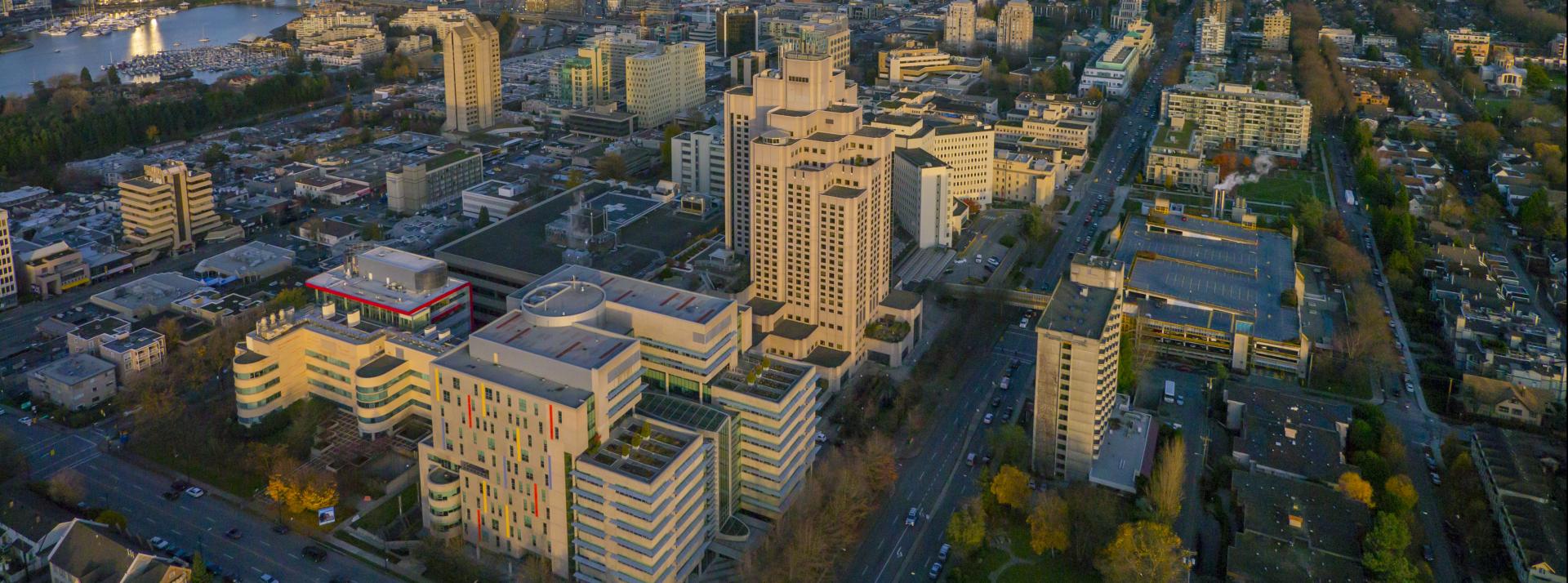Transitional Pain Clinic at Gordon and Leslie Diamond Health Care Centre
- 2775 Laurel Street Vancouver, BC V5Z 1M9
-
- Phone - Reception: (604) 675-3653
- Phone - Switchboard: (604) 875-4111 ext. 53653
- Fax: (604) 675-3659
The Transitional Pain Clinic at Vancouver General Hospital is a short-term outpatient clinic that provides pain management services before and after surgery to reduce the risk of transitioning from acute to chronic post-surgical pain.
How to access
-
Check eligibility
Postoperative patients must have had surgery within the past 3 months at Vancouver General Hospital, Lions Gate Hospital, or UBC Hospital.
-
Get a referral
If you are a pre-operative patient, you can be referred by Pre-Admissions Clinic and will be seen prior to surgery.
If you are a post-operative patient, you can be referred by the following services and are seen within two weeks of being discharged from the hospital after surgery:
- Complex Pain and Addiction Services (CPAS);
- Peri-Operative Pain Services (POPS);
- Surgical Services, Family Physicians, and Nurse Practitioner.
Hours of operation
We operate 24 hours a day, 7 days a week
Visiting hours may vary depending on the unit. Please call the Vancouver General Hospital switchboard at (604) 875-4111 to determine visiting times before your visit.
Parking and transportation
Pick-up and drop-off
Contact the service, program or department for pick-up and drop-off information.
Parking
Pay parking
If you're driving to VGH, leave enough time to find parking before your appointment. Consider dropping off elderly family members before seeking parking. Parkades can be found at the intersection of 12th Avenue and Laurel Street and within the Gordon and Leslie Diamond Health Care Centre at the corner of 12th Avenue and Oak Street.
Additional parking options, including parkades, street meters, and lots, are available within two or three blocks of the hospital. Refer to the site map for the parking symbol and respective locations. Note that overnight parking is not permitted for trailers or mobile homes. One-week parking passes for the VGH West 12th Avenue Parkade (at Laurel Street) can be purchased from the pay stations located in the parkade.
Download parking rates for VCH facilities
Wheelchair accessible parking
In both VGH parkades, wheelchair-accessible spaces are located near the elevators on levels 1, 2, 3 and 4. Metered spaces are available at the street level of the Jim Pattison Pavilion (enter from 12th Avenue) and within the inner courtyard. Be sure to display your “Disabled” parking permit.
Parking meters on-site
Some metered spaces are available outside the main entrance of the Jim Pattison Pavilion for dropping off and picking up patients. Other evening and weekend meters are within the inner courtyard north of 12th Avenue, entrance off Heather Street.
Free parking
You may find two-hour free parking between Oak and Granville streets (southwest of the hospital) and between West 12th and West 20th Avenues. Read the signs before you park. Parking attendants survey the area regularly, and many blocks are designated for residents only.
For more parking information, please call (604) 875-4832.
Public transportation
VGH is accessible by TransLink services from Vancouver International Airport, BC Ferry Terminals at Horseshoe Bay and Tsawwassen, Pacific Central Station (downtown Vancouver rail and bus station), and SkyTrain stations.
- Nearby bus routes include 9, 15, 17, and 99 B Line on West Broadway.
- Canada Line access from Broadway-City Hall station located at West Broadway and Cambie St. (~1km walk or use aforementioned bus routes).
Vancouver General Hospital (VGH)
Vancouver General Hospital (VGH) offers specialized health-care services to residents in Vancouver and across the province through regional programs. We provide a full range of basic and highly specialized emergency health-care and trauma services to British Columbia.


